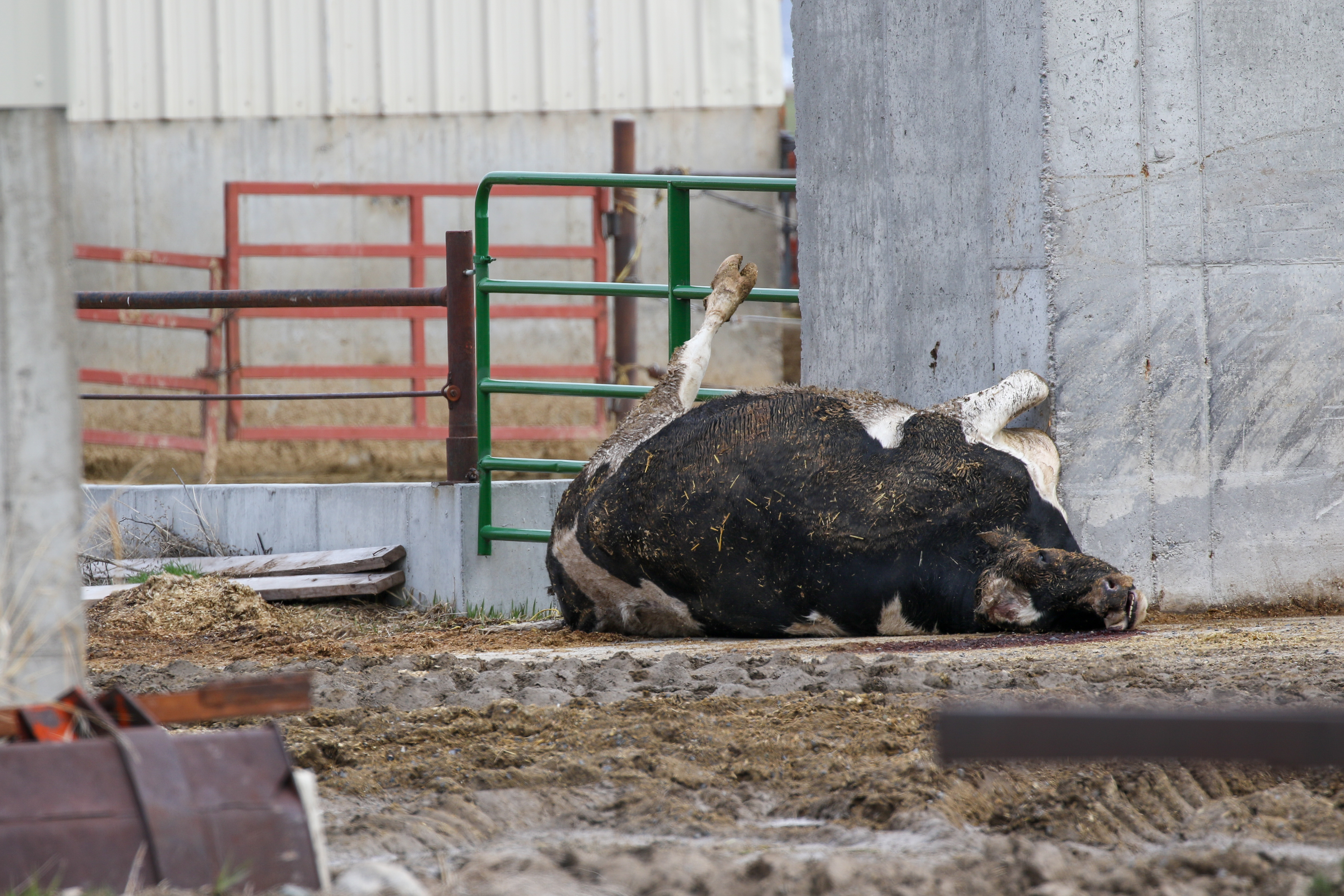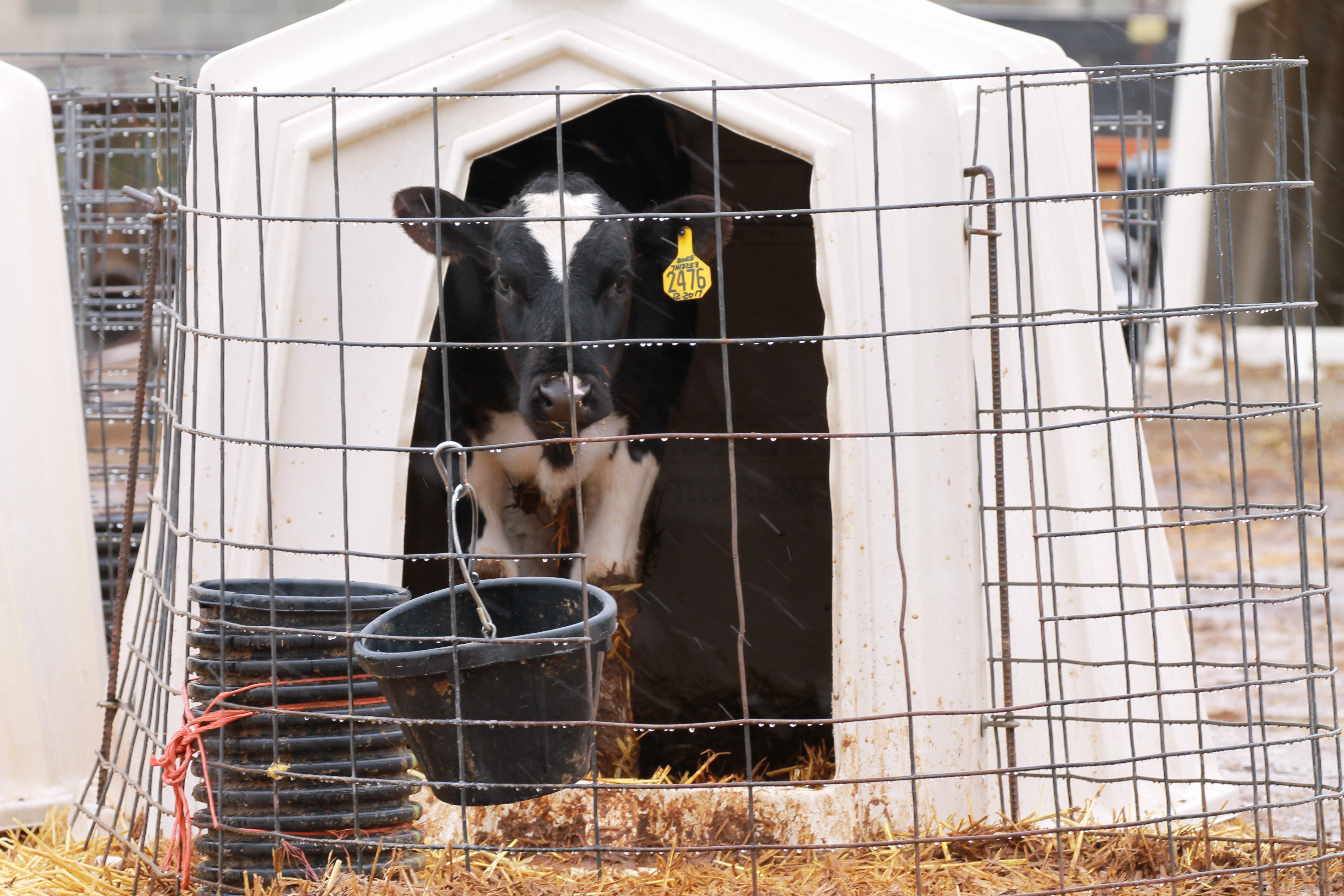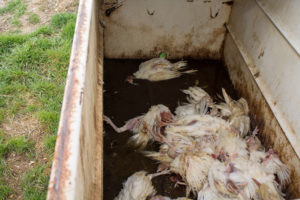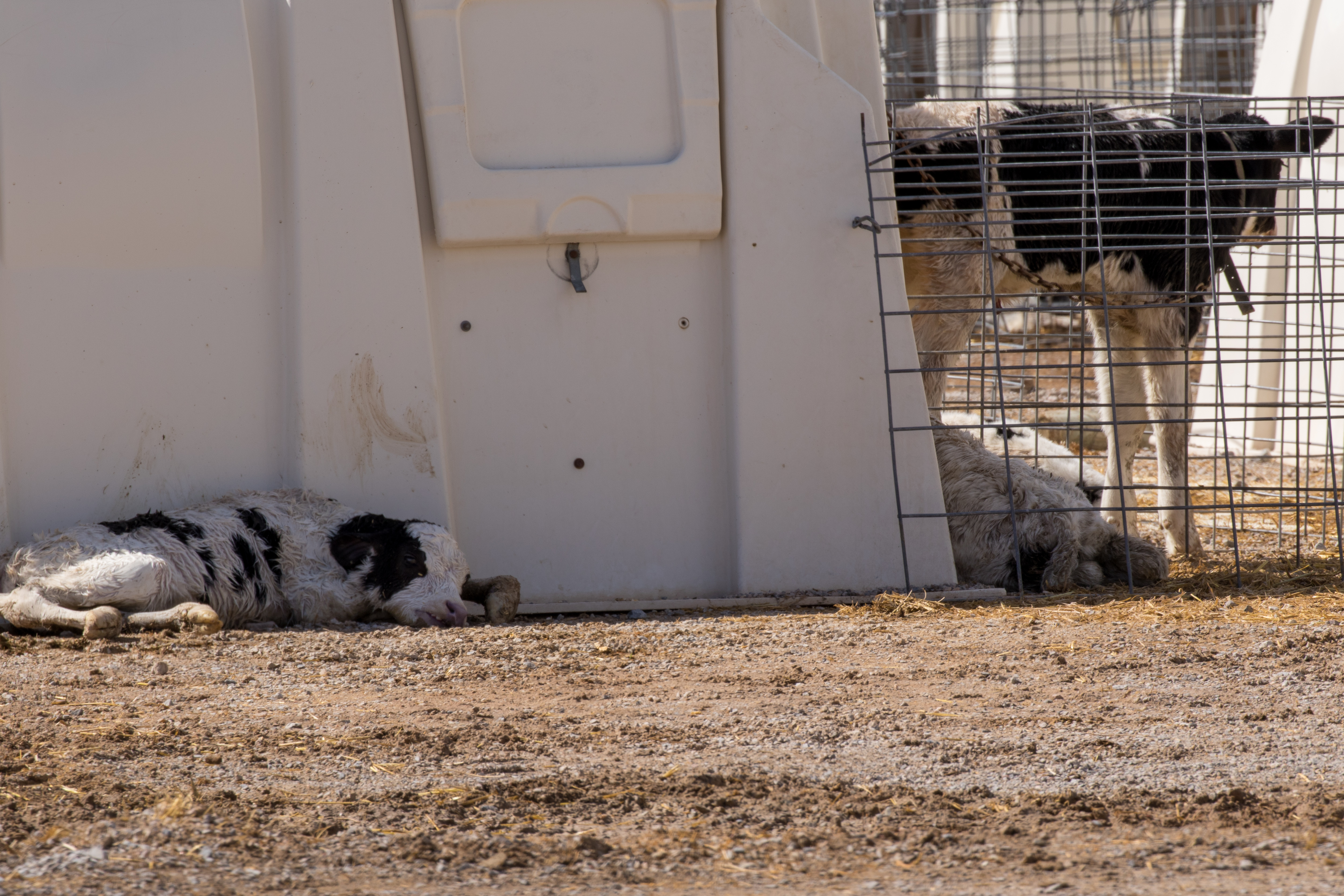There are large industries in Utah that prefer to stay in the shadows. Out of sight, out of mind. They don’t want you to know where they are, or that they even exist. After seeing them with my own eyes, I understand why.
This spring, on behalf of Utah Animal Rights Coalition (UARC), I partnered with Lauren Lockey from Sage Mountain with a shared vision. We wanted to pull back the curtain on Utah’s massive animal factory farms and show the public where these places are and what they look like, in graphic detail.
This was not a completely new experience for me. In 2013, the City of Draper prosecuted me under Utah’s “ag-gag” law, after I filmed a sick cow being pushed with a front-end loader outside a slaughterhouse. Utah’s “ag-gag” law made it a crime, punishable by up to 6 months in jail, for me or anyone else to film or photograph animal agricultural operations. After I and several co-plaintiffs mounted a vigorous legal effort against this law, it was finally declared unconstitutional last year. Having fought a lengthy and hard-fought battle in federal court, I wanted to make the most of our re-established constitutional rights.
Lauren and I spent dozens of hours driving all across the state of Utah to document the conditions on animal farms. I was shocked by the amount of cruelty and death we were able to witness and document without ever stepping foot on their property or entering any of the buildings.

Sanpete County is the one of the worst counties in the country to be a turkey. With nearly 50 individual farms, approximately 4.5 million turkeys are killed in Utah every year. Looking over the valley from the small town of Freedom (ironic, I know), I saw dreary, often old and run-down sheds in every direction. Turkeys on factory farms live an unnatural life inside these crowded sheds. To keep them alive long enough to make a profit in such confined conditions, factory farm workers cut off part of their sensitive beaks and toes so that they do not kill each other. Turkeys have been drugged, selectively bred, and genetically manipulated to grow unnaturally large and fast, often causing their legs to break under them, leaving them immobilized.
I knew the bodies of dead turkeys were worthless to the industry. But it was still shocking to see dumpsters for the dedicated purpose of body removal at the farms. When we found a couple on public property that we were able to peer into, the sight and smell of decaying bodies made me so nauseous it was challenging to even snap photos.
The ones who manage to survive don’t feel the sun on their backs until the day they are stuffed into transportation trucks and taken to the slaughterhouse, at about 5 months of age. Outside the Norbest turkey slaughterhouse in Moroni, the sides of the road are blanketed in turkey feathers. These feathers are all that remains of millions of animals who never had the opportunity to experience anything natural or important to them, like roosting and raising their young.
Turkeys aren’t the only birds suffering on Utah farms. According to USDA statistics, nearly 4 million hens are confined inside just 5 egg factory farm operations in Utah. We drove by four of the five on this trip. As if the security guards and biosecurity hazard signs weren’t enough, we were approached by workers at two of these facilities, who made it very clear that we were not welcome there.
While the outside of these egg factory farms smelled awful, nothing could prepare us for the smell outside of the Smithfield pig factory farms in Beaver County. Driving on Thermal Road, where we saw some of the sheds and waste lagoons, made me lightheaded and stung my eyes even before we even stepped out of the car.
More than 2 million pigs are killed in Beaver County every year. These are animals who may be more intelligent, and certainly just as capable of suffering, as the dogs we share our homes with and consider members of the family. The farms are tucked back and away from where most people ever drive. This is surely intentional. Many of the sheds can only be seen if you drive down private roads. Thousands of pigs are crammed into these sheds, as documented last year in a Direct Action Everywhere investigation and open rescue. That investigation showed exactly why the industry is trying to hide.
Utah proudly boasts having around 200 dairy farms. Unlike egg, chicken, turkey, and pig factory farms, much of massive dairy farm operations are outside, which allowed us to get a glimpse inside the life of a typical cow on a Utah dairy farm.
The massive dairy operations we were able to document are simply too large to even photograph, and similar to standing outside the waste lagoons of the Smithfield pig factory farms, our throats, eyes, and lungs burned from the overwhelming stench. We resorted to filming what it was like driving by some of them to try to show the full picture of how many calves are torn from their mothers at birth and confined in lonely hutches for months. These places look like graveyards – only the hutches are filled with calves who are still alive.
No matter the size of the dairy farm, all babies are taken from their mothers. Like all mammals, cows only produce milk to feed their young. I knew this was the reality, but was still disillusioned that the small farms would maybe not look quite so cruel. I was wrong. Small farms (mostly in Cache County) had old, dilapidated wood hutches, enclosures that looked like old dumpsters, flooded manure areas with mother cows sunk knee deep, and most tragically, a dead calf rotting outside another chained calves’ enclosure.
I have dedicated my life to animal advocacy for 13 years. I have watched countless hours of extreme animal cruelty inside factory farms, laboratories, circuses and other industries that use and abuse animals. I’ve witnessed a live, downed cow hoisted out of a slaughterhouse by a frontend loader and dumped as if she were nothing more than trash. I’ve read hundreds of descriptions of hideous experiments on primates and dogs, hidden behind cold, scientific jargon. To some extent, this experience has desensitized me, and I thought I had the strength to do this tour without feeling deeply emotionally drained. But it hit me on day one. Lauren and I, friends for a few years now and usually with so much to talk and laugh about, spent the majority of the trip in silence, trying to emotionally process what we were witnessing. When we got back home, seeing rain drops fall off a patio fence completely broke me, as visions of this calf immediately flashed back to me.
Reality set in: these animals are all still there, living their own versions of hell. I have the privilege to escape to a comfortable life. Millions of animals in Utah will never have this luxury. Although veganism is growing in popularity, we still have not convinced people fast enough that animal suffering is real, it’s important, and it’s avoidable by simply leaving animals off our plates. No matter how hard these industries try to hide behind private property, intimidating signs, unjust laws, and lies that animals are somehow so different than us that their suffering is justifiable, we can’t turn a blind eye to animal suffering.
Please, for them, use our interactive map to see where these farms are located. You can see with your own eyes what we witnessed at each farm. We plan to improve on this resource to include data, like the amount of tax subsides they receive, how many animals are killed, which corporations they supply, news stories of human trafficking and worker deaths, and more. Consumers not only have a right to know this information – it should be easily available for them, so they can make informed decisions about what we feed ourselves and our families.
Stay tuned for much more, and please follow UARC on Facebook and Instagram as well as Sage Mountain for more photos, videos, and stories.











